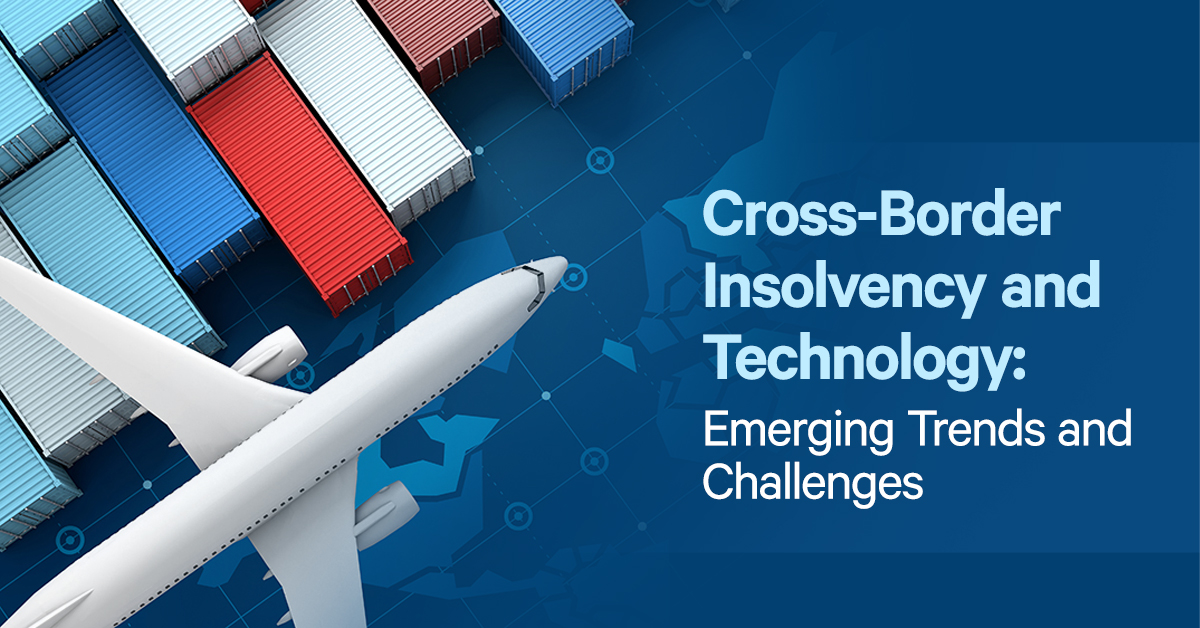In an increasingly interconnected global economy, the concept of ‘Cross-Border Insolvency’ is becoming more important than ever, especially within the UK’s legal and financial sectors. This blog post explores the meeting of cross-border insolvency and technology, focusing on the emerging trends and challenges of professionals in this field.
The Evolving Landscape of Cross-Border Insolvency
Cross-border insolvency refers to situations where insolvent debtors have assets or creditors in more than one country. This complexity is further magnified by technological advancements that have transformed business operations and asset types, making the insolvency process more detailed.
The UK’s Stance
With the significant global financial presence in the UK, addressing cross-border insolvency issues has been a priority. The adoption of the UNCITRAL Model Law on Cross-Border Insolvency and the EU Insolvency Regulation (before Brexit) are testaments to the UK’s commitment to international cooperation in this area. Post-Brexit, the UK continues to navigate these waters, redefining its approach to cross-border insolvency in a changing legal landscape.
Technological Impact
Technology’s role in insolvency is multifaceted and complex. While it has undoubtedly enhanced efficiency, the implications are far-reaching. On the positive side, technology has revolutionised traditional practices. Automated systems and sophisticated software have sped up the processing time of insolvency cases and reduced manual errors. Enhanced transparency is another significant benefit. Advanced data analytics tools enable a more transparent evaluation of a company’s financial health, offering real-time insights and detailed forensic analysis. This is crucial in uncovering hidden liabilities or assets that might otherwise go unnoticed.
Technology has also greatly improved asset tracking, particularly in cross-border cases. Digital tools allow for the swift identification and tracking of assets spread across different jurisdictions, a previously time-consuming task prone to inaccuracies. This improvement is vital in ensuring the equitable distribution of assets among creditors.
However, the integration of technology into insolvency practices brings its own set of challenges. The rise of digital assets, such as cryptocurrencies and unique digital intellectual property, has introduced unprecedented complexities. These assets exist in a digital realm governed by rapidly evolving technology and often lack clear legal and regulatory frameworks. Cryptocurrencies, for example, pose unique challenges due to their volatile nature and difficulty in ascertaining their value and ownership. Similarly, intellectual property in the digital age, such as software, digital media, and patents, requires specialised knowledge to assess and realise their value accurately in insolvency proceedings.
The decentralisation and borderless nature of these digital assets raise jurisdictional challenges, making it difficult to determine the applicable legal framework. This complexity is compounded by the rapidly changing landscape of technology, requiring insolvency practitioners to continually update their knowledge and adapt their practices. As a result, while technology has brought about significant improvements in the insolvency realm, it also demands a higher level of expertise and adaptability to manage these new-age assets effectively.
Three Trends Influencing Cross-Border Insolvency
1. Digital Assets and Cryptocurrencies
One of the most significant challenges in modern insolvency practice is dealing with digital assets. Cryptocurrencies, for instance, pose jurisdictional challenges due to their decentralised nature. Insolvency practices are evolving to develop mechanisms for effectively handling such assets, which often fall into grey areas of the law.
2. Use of Technology in Insolvency Proceedings
Technological tools like AI and blockchain are reshaping insolvency proceedings. AI aids in analysing large volumes of data to identify hidden assets or fraudulent transactions. Blockchain offers a transparent and secure way to record transactions, which can be crucial in cross-border insolvency cases.
3. Cybersecurity Concerns
As reliance on technology increases, so does the risk of cyber threats. Insolvency practitioners must be vigilant about data security, especially when handling sensitive information across borders.
Three Challenges in Cross-Border Insolvency
1. Jurisdictional Complexities
One of the primary challenges in cross-border insolvency is the jurisdictional complexity. Different countries have varying insolvency laws, and determining which jurisdiction’s law applies can be challenging. Insolvency practitioners must navigate these differences, often working with foreign counterparts to resolve cross-border cases.
2. Legal and Practical Challenges
The legal framework for cross-border insolvency is still evolving. The lack of uniformity in international insolvency laws often leads to legal uncertainties. Practitioners must also deal with practical challenges such as language barriers, cultural differences, and varying business practices.
3. The Impact of Brexit
Brexit has added another layer of difficulty to cross-border insolvency. The loss of the automatic recognition of UK insolvency proceedings in EU member states means that practitioners must find alternative grounds for recognition, potentially complicating cross-border insolvency cases involving EU countries.
The Way Forward
To address these challenges, there is a growing emphasis on adopting technology in insolvency practice. Leveraging technology for asset tracing, data analysis, and secure communication can streamline cross-border insolvency processes. There is also a need for greater harmonisation of insolvency laws globally. The UK can play a pivotal role in advocating for international cooperation and the adoption of uniform standards, especially in handling digital assets. For insolvency practitioners, staying up to date with technological advancements and international legal developments is essential. What’s more, continuous education and adapting to new tools and methods are necessary to navigate the complexities of cross-border insolvency effectively.
The Future of Cross-Border Insolvency
Cross-border insolvency remains a dynamic and challenging field, particularly in the context of rapid technological changes. As the UK continues to redefine its position post-Brexit, embracing technological advancements and advocating for international legal harmonisation will be key to effectively managing these complexities. The future of cross-border insolvency practice lies in adapting to these emerging trends and challenges.
Reach out to an Expert
If you’re navigating the complexities of insolvency or facing challenges with cross-border assets, don’t let uncertainty hold you back. Take control and reach out to our team of experts for tailored solutions and professional guidance. Whether it’s a phone call or an email, we’re here to help you find clarity and peace of mind. Call us now on 0800 246 1845 or email us at norwich@leading.uk.com. Let’s tackle this together – we’re just a call or click away.






